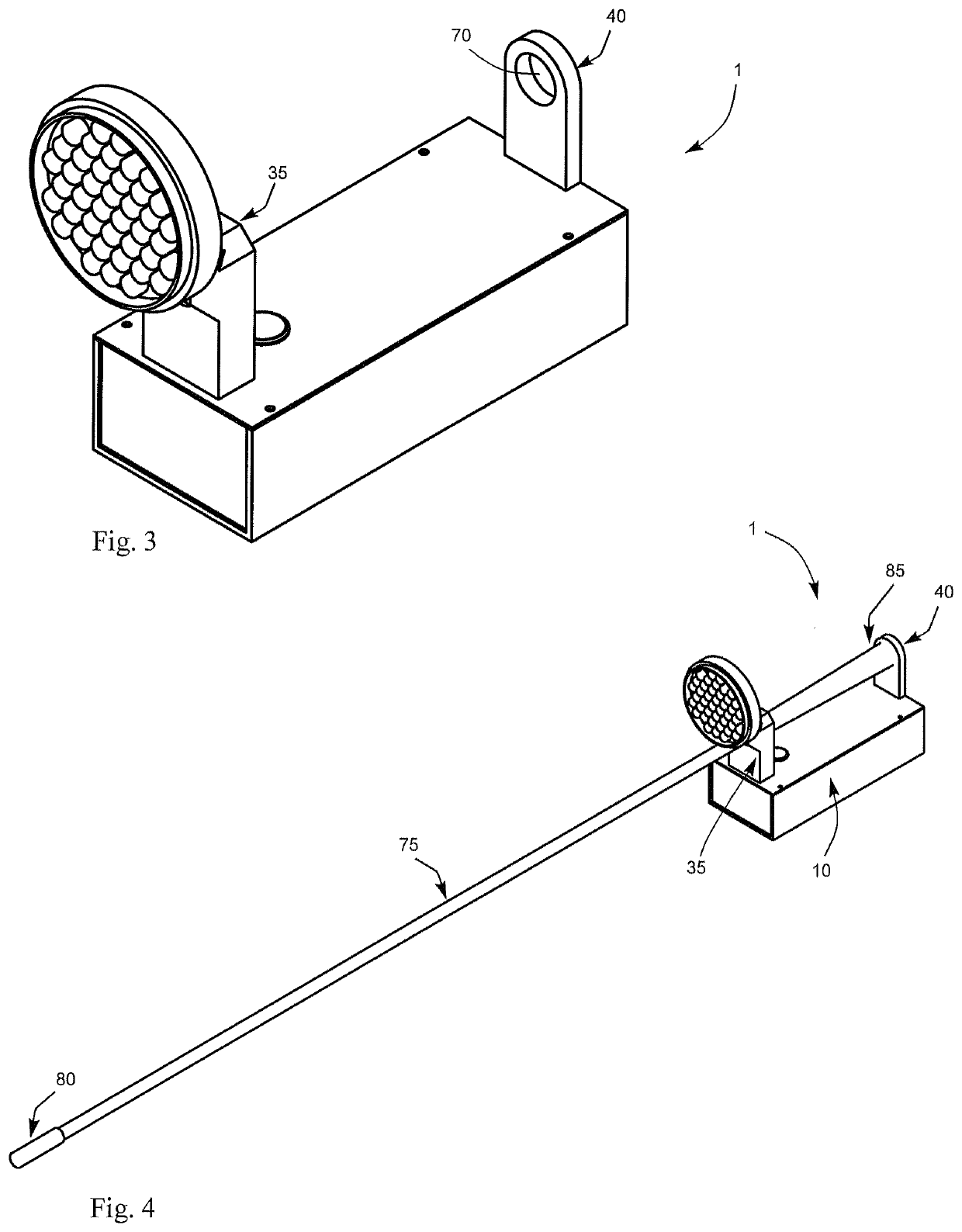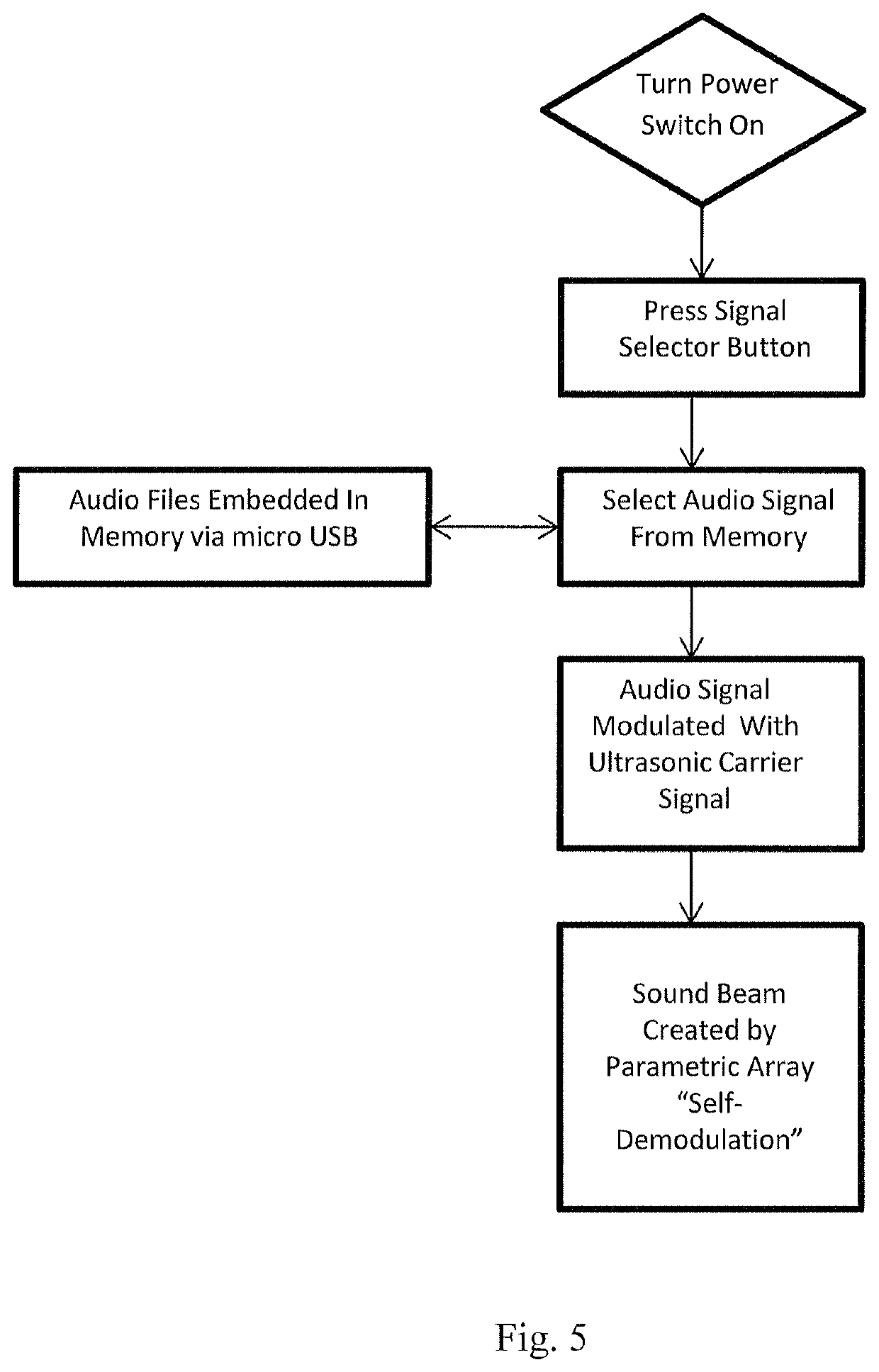Method and apparatus for object detection using human echolocation for the visually impaired
a technology of object detection and echolocation, applied in the field of echolocation, can solve the problems of difficulty in generating a strong, targeted signal, annoying and distracting vibrations of other object detection aids or wearables, and users with disabilities
- Summary
- Abstract
- Description
- Claims
- Application Information
AI Technical Summary
Benefits of technology
Problems solved by technology
Method used
Image
Examples
Embodiment Construction
[0024]The present invention relates to an object detection device that uses echolocation and may be used by the visually impaired to assist with his or her spatial awareness. The device preferably outputs a sound beam that produces an echo when it reflects off of an object in front of a user. That way, a user can use echolocation training to determine where an object is in front of him or her, how far away the object is, how large the object is, and possibly what type of material the object is made of.
[0025]Referring now to FIGS. 1 and 2, an example echolocation or object detection device 1 is provided in perspective and plan views, respectively. At a lower side 5 of the object detection device 1, an electronics unit 10 is preferably provided for controlling and powering a parametric array (not illustrated) contained within the electronics unit 10. As known and understood in the art, and for the purposes described below, the electronics unit 10 preferably includes at least each of a...
PUM
 Login to View More
Login to View More Abstract
Description
Claims
Application Information
 Login to View More
Login to View More - R&D
- Intellectual Property
- Life Sciences
- Materials
- Tech Scout
- Unparalleled Data Quality
- Higher Quality Content
- 60% Fewer Hallucinations
Browse by: Latest US Patents, China's latest patents, Technical Efficacy Thesaurus, Application Domain, Technology Topic, Popular Technical Reports.
© 2025 PatSnap. All rights reserved.Legal|Privacy policy|Modern Slavery Act Transparency Statement|Sitemap|About US| Contact US: help@patsnap.com



